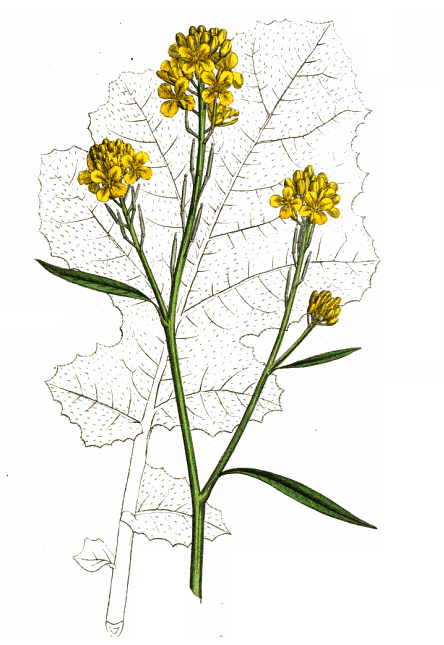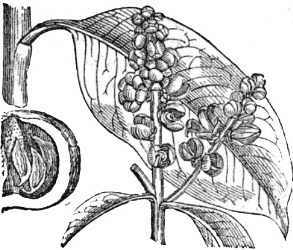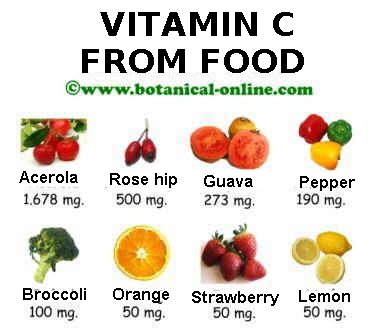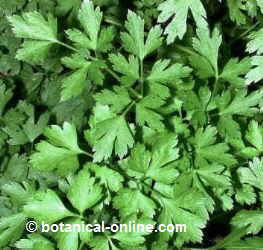Contents
Food properties of wheat bran
What is wheat bran?
Wheat bran is the product that remains when refining the grain of wheat. Bran corresponds to what would be the outer layers of grain and more specifically the pericarp, with its three sub layers: exocarp, mesocarp and endocarp (rich in fiber and minerals), the testa (rich in vitamins and enzymes) and the aleurone layer (rich in proteins and fats)
The elimination of these layers supposes the deprivation of a whole series of nutrients that are very important for health.
When we eat bread from whole flour of whole wheat, these nutrients are merged into the mass and we can take advantage of them. When we eat white bread, the majority of nutrients do not appear in this type of bread, which is deprived from most vitamins, fiber, minerals, fats, enzymes, making it a product very interesting to provide energy but without the advantages of the other components that the whole bread has.
Food composition of wheat bran
– A high amount of protein: Protein is needed for the construction and regeneration of the body. It is important for the formation of enzymes and other chemical processes. Wheat bran is rich in protein.
– Low in fat and with many carbohydrates: Wheat bran contains little fat. In addition, it does not have cholesterol, and polyunsaturated fats nearly double saturated fats. This does not happen with meat that has a higher proportion of saturated fat much more harmful to health. Cereals do not contain cholesterol so they do not affect to the incidence of many cardiovascular diseases.
– Rich in vitamin B: Wheat bran contains high amounts of vitamin B. The importance of this vitamin in the processing of fats, proteins and carbohydrates into energy is vital. Vitamin B plays an important role in nervous system health and the production of hormones, enzymes or proteins, as well as strengthening the immune system .
This vitamin is very important for the elderly and for vegetarians, who have a very strict diet with no feeding of animal flesh, eggs, milk and derivatives. In both cases, when vitamin B intake is scarce, some body anomalies can appear.
Among all the vitamins of vitamin B group, wheat bran contains niacin, pyroxidine and thiamin. Equally remarkable is the extremely high content of vitamin E, which is one of the main antioxidants.
– Rich in minerals: Wheat bran is rich in minerals, especially calcium, potassium, phosphorus, iron, magnesium and manganese. Wheat bran is the type of bran that contains more copper and more zinc.
In spite of its real mineral wealth, it is necessary to consider that bran is rich in phytates. These components inhibit the absorption of minerals, mainly iron and calcium, reason why, instead of providing more calcium or iron to the body, they could even harm the absorption of other minerals coming from other foods.
It has been proved that is more advisable to take brown bread that the crude bran, because cooking destroys most of the phytates. There is also evidence that excessive intake of bran can lower levels of minerals in the body.
– Rich in non soluble fiber: Whole grains are the foods most rich in insoluble fiber in the form of cellulose, hemicellulose and lignin. Fiber has a big capacity to absorb water, although it does not dissolve as soluble fiber does. Wheat bran is the type of brand that contains more fiber bran used as a dietary supplement.
Curative properties of bran
Although wheat bran contains other components, the main healing properties of this supplement comes from its wealth of non-soluble fibers. Among the main properties of bran, we can mention the following:
– Control of cholesterol in blood: Besides not containing cholesterol, wheat bran has the capacity, by its high fiber content, to absorb the cholesterol of the intestine and to expel it with feces to the outside before it is absorbed by the organism. This has been verified in people who include bran supplements in their diet.
– Control of constipation: fiber contained in wheat bran increases intestinal peristalsis and softens the fecal matter so that it can be expelled to the outside more easily and frequently, preventing constipation, a condition that affects many adults in Western society because of the practice of removing the bran in cereals.
By comparative studies it has been seen that cultures that eat foods high in fiber have a much higher number of stools. In India the average feces are calculated between 300 and 500 grams per day, with a residence time in the intestines of about 30 to 35 hours. In the western world, adult people keep their feces for 3 days and old people about 15. The average weight of these is estimated only around 100 g.
– Control of the sugar levels in the blood: wealth-fiber wheat bran enhances the control of sugar levels in the blood. Studies in patients with diabetes have shown that the bran ingestion allows them to control glycaemia better.
– Reduction of some types of cancers: In addition to absorbing cholesterol, wheat bran, has the capacity to absorb large amounts of toxins that are excreted. According to numerous studies, people taking supplement of bran have a lower ratio of some cancers, including colon cancer, breast cancer , cancer of the prostate and uterine cancer.
– Prevention and treatment of hemorrhoids: Hemorrhoids usually originate by increased pressure on the veins of the rectum. When defecation is difficult, the pressure on the blood vessels of the rectum can cause hemorrhoids. A diet rich in fiber help make stools soft so that feces removal can be done with less effort. This is a good way to prevent hemorrhoids.
– Prevention of diverticulitis: An adequate intake of bran can prevent the onset of digestive diseases such as diverticulitis. It was found that a diet low in fiber food, favors the emergence of this disease.
– It helps weight-loss diets: supplements of wheat bran can be used to help you lose weight, since, when mixed with water in the intestine, they increase the volume of intestinal contents, what conveys to stomach fullness. The fiber diet is one of the most used to reduce some extra kilos.
– Cosmetic: Wheat bran is used in cosmetics to make masks for the treatment of abnormalities of the skin, especially in regard to skin care. (See mask for wrinkles)
Ways to ingest supplements of wheat bran. Recommended doses
You can eat wheat bran dry fragments or wheat bran tablets. In addition, wheat bran can be purchased as a supplement such as oats or rice. The most common way to take it is by means of ingesting raw bran fragments. The usual dose as a preventative is one tablespoon daily with juices, milk, yogurt, potatoes, etc.
Much higher therapeutic doses can be taken. To lower cholesterol, for example, it is recommended taking 25 to 100 g per day, which clearly exceeds the total daily dose of fiber recommended which is estimated at 25-35 g daily. In case of constipation, it is recommended to take 15 g daily of the mixture of wheat bran and oat bran.
You should consult with a dietitian, nutritionist or doctor to determine which is the amount you should ingest. Ingestion should be done taking it progressively until reaching the recommended dose. Keep in mind that the reaction to the bran is very dependent on people’s nature. Some, for example, require up to six times more than others to fight constipation. Keep in mind that, when you take dry bran pieces, the larger the fragments, the greater the effects you will obtain.
In cases of high intake it is recommended to start with small doses, so that the body gets used to it.
Precautions with wheat bran
It should be borne in mind that wheat bran is no food but a nutritional supplement, so we must be prudent in the amount of bran we eat. Bran intake in excessive doses can cause more health problems than advantages. Excess insoluble fiber may cause intestinal abnormalities such as rots, diarrhea, bloating, flatulence or bowel obstruction. Excessive bran dieting may be responsible for more serious illnesses such as irritable bowel syndrome or, as seen above, deficiency of minerals.
If you habitually eat whole bread., you do not have to take bran supplements, unless indicated by your doctor. You do not need it if you follow a diet abundant in rich natural non soluble fiber foods. This will include all the vegetables; some fruits, like pineapples or cherimoyas; or some vegetables like carrots, spinach, artichokes, lettuces, tomatoes or chard).
It is necessary to drink a lot of water if you eat wheat bran to prevent ingestion. Water helps to soften the fibers and facilitate its passage through the intestines. You are advised to drink at least a couple of liters of water if you include this supplement in your diet.
In case of diverticulitis, you should consult your doctor before taking this supplement. Wheat bran should not be taken by people who suffer from some form of colitis, including ulcerative colitis or Crohn’s disease. In case of osteoporosis, it is recommended not to take it because this supplement inhibits the absorption of calcium.
The following table shows the composition of wheat bran and other wheat parts of products
Composition of wheat bran compared with other parts of the wheat grain (100 gr) | |||
| Whole wheat bran | Refined flour | Whole bread | |
| Water | 9.89 g | 11.92 g | 37.70 g |
| Calories | 216 kcal | 364 kcal | 246 kcal |
| Fat | 4.25 g | 0, 98 g | 1, 60 ‘ g |
| Proteins | 15.55 g | 15.40 g | 9.70 g |
| Carbohydrates | 64.51 g | 76, 31 g | 46.10 g |
| Fiber | 42, 8g | 2, 7 g | 6.9 g |
| Potassium | 1182 mgs | 107 mgs | 252 mgs |
| Phosphorus | 1013 mgs | 108 mgs | 229 mgs |
| iron | 10.57 mgs | 4.64 mgs | 3.30 mgs |
| Sodium | 2 mgs | 2 mgs | 527 mgs |
| Magnesium | 611 mgs | 22 mgs | 86 mgs |
| Calcium | 73 mgs | 15 mgs | 72 mgs |
| Copper | 0, 998 mgs | 0, 14 mgs | 0, 284 mgs |
| Zinc | 7, 27 mgs | 0.70 mgs | 1.94 mgs |
| Manganese | 11, 500 mgs | 0, 682 mcg | 2, 324 mcg |
| Vitamin C | 0, 0 mg | 0 mg | 0 mg |
| Vitamin A | 0 mg | 0 UI | 0 UI |
| B1 vitamin (Thiamin) | 0.523 mgs | 0.1 mgs | 0.351 mgs |
| B2 vitamin (Riboflavin) | 0, 577 mgs | 0, 04 mgs | 0.205 mgs |
| B3 vitamin (Niacin) | 13.578 mgs | — mg | 3.837 mgs |
| B6 vitamin (Pyridoxine) | 1, 303 mgs | 0,2 | 0.179 mgs |
| Vitamin E | 2, 320 mgs | 0. 060 mgs | 0.853 mgs |
| Folic acid | 79 mcg | — mcg | 50 mcg |
![]() More information on wheat
More information on wheat








